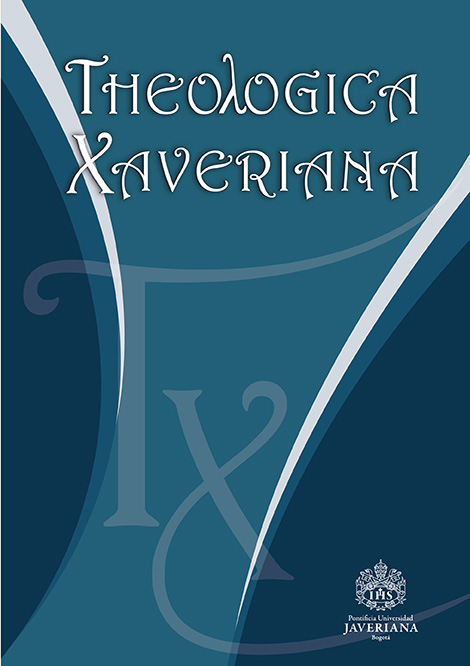Resumen
El artículo indaga en la temática del cuerpo a partir de la experiencia del sufrimiento humano: dimensión que supera cualquier escrito y muchas veces fractura las aproximaciones discursivas y teóricas. Sin embargo es menester asumir el riesgo con vistas a la esperanza. Por eso se ha profundizado en el padecimiento ligado al abuso y la tortura, entendiendo al cuerpo como lugar “sin metáforas” donde se alberga la memoria, la resistencia y una esperanza que va más allá de lo meramente racional. El cuerpo, en cuanto exceso de significado, es también un territorio y una membrana en donde se acoge o rechaza al otro. Desde ahí la teología y la ética son desafiadas a repensar la realidad corporal en la perspectiva de una verdadera compasión, confianza y lenguaje que den cuenta de la complejidad del cuerpo maltratado. La actualidad eclesial y social han puesto en tela de juicio prácticas y discursos sobre el cuerpo sufriente. El abuso sexual, de poder y conciencia se han manifestado como realidades que están lejos de ser marginales. A partir de una lectura fenomenológica nos preguntamos por la posibilidad de continuar viviendo –y creyendo– luego de haber padecido lo indecible. Para ello se estudian algunos casos y se lleva a cabo un agudo análisis bibliográfico según el cual se pueden descubrir nuevos rasgos del ser humano y de Cristo, en cuanto Mesías que llora y consuela. La esperanza cristiana de cara al Dios-en-la-carne crucificado puede permitir a los cuerpos que padecen volver a ponerse de pie. Este artículo busca afirmar esto asumiendo la radical dificultad que el sufrimiento impone, para el pensar, el decir y el continuar la vida.
Achondo, Pedro Pablo, Desde el abismo clamo a ti Señor. Dios, el sufrimiento y lo que podemos hacer. Santiago: San Pablo, 2017.
Agamben, Giorgio. El uso de los cuerpos, Homo sacer, IV, 2. Buenos Aires: Adriana Hidalgo Editora, 2018.
Chalier, Catherine. Traité de larmes, fragilité de Dieu, fragilité de l’âme. Paris: Albin Michel, 2008.
De Certeau, Michel. La fable mystique. I. XVIe-XVIIe siècle. Paris: Gallimard, 1987.
Debray, Régis. Elogio de las fronteras. Barcelona: Gedisa, 2016.
Duarte-Plon, Leneide y Clarisse Meireles. Um homem torturado, nos passos de frei Tito de Alencar. Rio de Janeiro: Civilização Brasileira, 2014.
Han, Byung-Chul. Sobre el poder. Barcelona: Herder, 2016.
Henry, Michel. Filosofía y fenomenología del cuerpo. Salamanca: Sígueme, 2007.
Juan Pablo II. “Audiencia general (20 de febrero de 1980)”. Vatican, https://w2.vatican.va/content/john-paul-ii/es/audiences/1980/documents/hf_jp-ii_aud_19800220.html (consultado el 12 de mayo de 2019).
Lacroix, Xavier. O corpo de carne, as dimensões ética, estética e espiritual do amor. São Paulo: Loyola, 2009.
Martínez, Oscar. Los migrantes que no importan. Oaxaca: Sur Ediciones, 2010.
Miller, Alice. La madurez de Eva. Una interpretación de la ceguera emocional. Madrid: Paidós-Contextos, 2010.
Rolland, Jean-Claude. Soigner, témoigner. Paris: Colloque de la Association Primo Levi, 2011.

Esta obra está bajo una licencia internacional Creative Commons Atribución 4.0.


